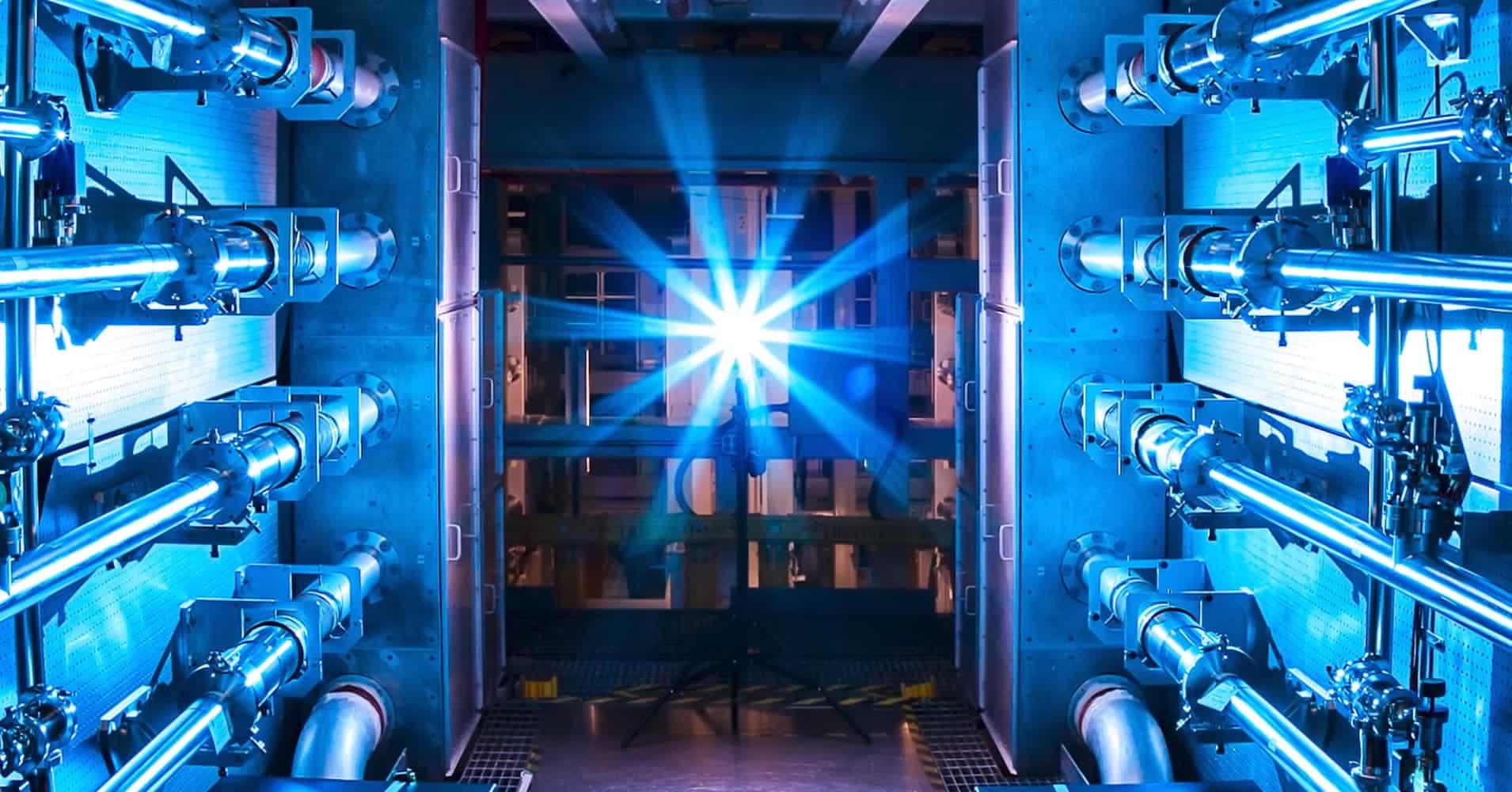About Nuclear Fusion Reaction
- Nuclear fusion reaction involves combining two atomic nuclei to form a single heavier one, releasing an enormous amount of energy.
- Such reactions do not occur at room temperature and large amounts of energy are required to create conditions conducive to generating fusion-powered energy.
- It is the same fundamental reaction that powers the sun and other stars.
What is Nuclear Fission?
- Nuclear Fission is a type of nuclear reaction in which the nucleus of an atom is split into two or more smaller nuclei, along with the release of a significant amount of energy.
- Process:
- It occurs when a large, heavy atomic nucleus, typically of elements like uranium-235 or plutonium-239, absorbs a neutron.
- The nucleus becomes unstable and splits into two or more smaller nuclei, releasing additional neutrons, gamma rays, and a vast amount of energy in the form of kinetic energy.
- The additional neutrons can further cause fission in nearby nuclei, leading to a chain reaction.
Nuclear Reactors:
- Nuclear fission is employed in nuclear reactors to generate electricity.
- In these reactors, controlled fission reactions take place within fuel assemblies, typically using enriched uranium or plutonium.
- The heat produced during fission is used to generate steam, which drives turbines to produce electricity.
- Issues with Nuclear Fission Reactors:
- Radioactive Waste: Nuclear fission produces radioactive waste that remains hazardous for thousands of years.
- Nuclear Accidents: The potential for nuclear accidents, although rare, is a significant concern.
- High Initial Costs: Building nuclear fission reactors involves substantial upfront costs, making it a capital-intensive energy option.
- Limited Fuel Supply: Most nuclear fission reactors use enriched uranium as fuel, which is a finite resource. While there is plenty of uranium in the world, the high-grade, economically viable deposits are limited.
- Advantages of Nuclear Fusion Reactors:
- Nuclear Fusion produces more energy than fission does. This means that a given amount of fuel yields much greater amounts of energy with fusion than with fission.
- It also doesn’t produce radioactive byproducts that need to be stored, or harmful carbon emissions; it simply produces inert helium and a neutron.
- Unlimited Fuel supply: The fuel to make fusion happen is simply heavy hydrogen atoms, which can be found in something that Earth has in abundance: seawater. No mining of uranium is required.
- It is much safer than nuclear fission, since fusion can’t create runaway reactions.
Q1) What is Radioactivity?
Radioactivity is a natural phenomenon by which certain unstable atomic nuclei spontaneously decay, emitting radiation in the form of particles or electromagnetic waves. This process is a result of the fundamental forces and interactions within the atomic nucleus.
Source: Unleashing Limitless Energy: US Scientists Repeat Nuclear Fusion Breakthrough
Last updated on December, 2025
→ Check out the latest UPSC Syllabus 2026 here.
→ Join Vajiram & Ravi’s Interview Guidance Programme for expert help to crack your final UPSC stage.
→ UPSC Mains Result 2025 is now out.
→ UPSC Notification 2026 is scheduled to be released on January 14, 2026.
→ UPSC Calendar 2026 is released on 15th May, 2025.
→ The UPSC Vacancy 2025 were released 1129, out of which 979 were for UPSC CSE and remaining 150 are for UPSC IFoS.
→ UPSC Prelims 2026 will be conducted on 24th May, 2026 & UPSC Mains 2026 will be conducted on 21st August 2026.
→ The UPSC Selection Process is of 3 stages-Prelims, Mains and Interview.
→ UPSC Result 2024 is released with latest UPSC Marksheet 2024. Check Now!
→ UPSC Prelims Result 2025 is out now for the CSE held on 25 May 2025.
→ UPSC Toppers List 2024 is released now. Shakti Dubey is UPSC AIR 1 2024 Topper.
→ UPSC Prelims Question Paper 2025 and Unofficial Prelims Answer Key 2025 are available now.
→ UPSC Mains Question Paper 2025 is out for Essay, GS 1, 2, 3 & GS 4.
→ UPSC Mains Indian Language Question Paper 2025 is now out.
→ UPSC Mains Optional Question Paper 2025 is now out.
→ Also check Best IAS Coaching in Delhi

















